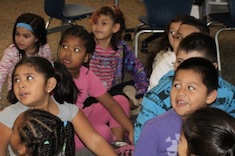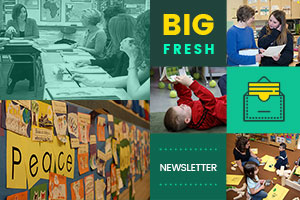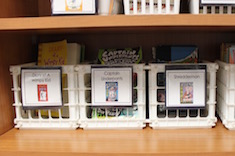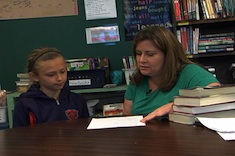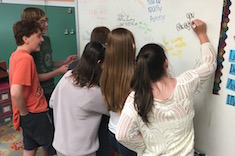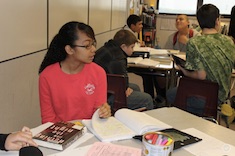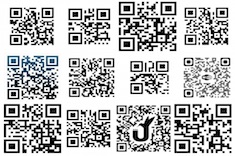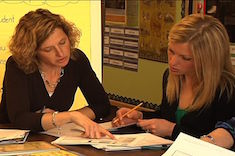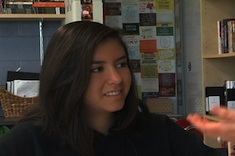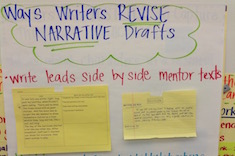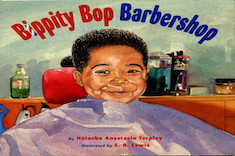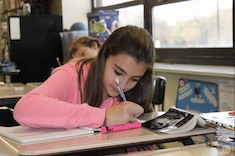Library
Choice Literacy Articles & Videos
The Choice Literacy library contains over 3,000 articles and 900 videos from 150+ contributors. Classic Classroom and Literacy Leadership subscribers have access to the entire library. Content is updated continuously, with five to six new features published each week.
Latest Content
Teaching Fifth Graders to Make Peer Recommendations
Katherine Sokolowski confers with her son Liam and his friend Caden, helping them learn how to make peer book recommendations.
Getting to Know English Language Learners All Year Long
We spend a lot of time early in the year getting to know students and their families, and often celebrate the diversity of these families late in the year with multicultural festivals. Stella Villalba worries that this is a missed opportunity (especially with English language learners). She shares how teachers can integrate getting-to-know-you activities into regular classroom routines all year long.
The Big Fresh December 3, 2017 The Perfect Space
We look at classroom preparations for winter break in this week’s Big Fresh.
Reaction and Intention: Rethinking the Library in Early Winter
Mary Lee Hahn finds some of her fifth-grade readers are stuck in ruts by early winter. Her solution involves some radical changes to her classroom library over winter break.
Preparing Students for Winter Break Reading
Tara Barnett and Kate Mills explain how they avoid a holiday reading slump with students through “break baggies” that include plans developed in the classroom and books selected with peer and teacher input.
More Productive Writing Workshops
Melanie Meehan shares how everything from transitions to clutter can provide clues for how to increase student output and enjoyment.
“If You Like” Reading Recommendations Conference
Building "next-read" stacks with students before holidays is a great way to ensure they have books in hand that they will be excited to read over break. Katherine Sokolowski helps Taryn finds books that are similar to those written by Rick Riordan (Taryn's favorite author).
Better Writing Response Groups
Tara Barnett and Kate Mills discover giving “compliments and wishes” aren’t enough when it comes to useful feedback for revision in peer groups. They implement a more structured response process for writing groups.
Using Podcasts as an Alternative to Article of the Week
Gretchen Schroeder adapts the popular "Article of the Week" activity with podcasts as an alternative in her high school classroom, and shares some of her favorite podcasts to use with students.
Focused Revision: Introductions
Gretchen Schroeder focuses solely on revision to introductions in her high school classroom with three fun activities to teach students new possibilities for beginnings.
First-Grade Minilesson: Repeated Phrases
Bitsy Parks uses mentor texts and her own writing in a minilesson on how her first graders might use repeated phrases in their writing for more impact.
QR Code Listening Stations
Listening stations are invaluable in elementary reading workshops, and can also be a hassle to set up and maintain. QR codes to the rescue! Stephanie Affinito shares how she helps teachers use simple online tools for setting up QR code listening stations.
Tips for Student Podcasting
Mark Levine details a podcast assignment he used with his middle school students to explore civil rights topics, including software options, a template to help students get organized, and a realistic timeframe.
Teaching Revision in Middle School
Christy Rush-Levine finds her middle school students are adept at planning for writing with notes and visuals, but rarely revise their drafts. She develops a minilesson sequence to help them hone their revision skills.
The Big Fresh November 18, 2017 Grounded
We look at the power of teachers writing in this week’s Big Fresh.
Writers and Themes: Fifth-Grade Discussion
Acclaimed children’s book author and teacher Jennifer Richard Jacobson talks with a group of fifth graders about how writers establish a theme early in stories and then braid elements of the theme throughout the text.
Writing Empathy
Dana Murphy explains why teachers can have true empathy with student writers only if they write themselves, and chronicles the difference between a typical and an empathetic response in a writing conference.
Making Co-Teaching Work
Kate Mills and Tara Barnett often write together about their experiences as co-teachers. They share their best advice for teachers and school administrators on how to make co-teaching partnerships between classroom teachers and special educators work.
What Writers Need
Mandy Robek commits to two weeks of focused daily writing, and then translates what she learns about what writers need to classroom practice.
The Big Fresh November 11, 2017 What’s Your Hashtag?
We consider how to teach summaries and conclusions in this week’s Big Fresh.
Writing Effective Conclusions
Anadiplosis, tricolon, syntax and such — when Gretchen Schroeder's high school students are stuck in rhetorical ruts, she teaches them some new rhetorical tricks for crafting conclusions.
The Quote Collector
Are you a quote collector? Stephanie Affinito shares her love of quotes with students and also enlists them as quote collectors.
Teaching Summary with Book Blurbs
Katherine Sokolowski finds her fifth graders can give detailed retellings during conferences, but struggle to come up with succinct summaries. Writing book blurbs is her creative solution for building summarizing skills.
Writing a Strong Conclusion to a Literary Analysis Essay
Christy Rush-Levine helps eighth grader Katherine sort through tools and strategies for writing a strong conclusion to her literary analysis essay.
The Big Fresh November 4, 2017 Neighborhood Library
We look at mentor texts from many angles in this week’s Big Fresh.
Using Mentor Texts Across the Writing Process
Tara Barnett and Kate Mills describe how they use one mentor text, Owl Moon, to teach multiple lessons on craft during a writing unit.
Mentor Texts for Letter Writing
Clare Landrigan and Tammy Mulligan share some of their favorite mentor texts for a unit on letter writing.
Girls’ Book Share in Fifth Grade
Katherine Sokolowski demonstrates how she helps a group of girls in her fifth-grade classroom learn to help each other select books based on previous experiences and tastes.
Children’s Books: Mirrors and Windows
Is your mentor text a mirror for students? Shari Frost explains the term and provides criteria for selecting mirror books.
Assessment Refresh
Christy Rush-Levine considers how her rubrics do not acknowledge different levels of support some students need to accomplish tasks. She rethinks her rubric design to include support, and in the process fosters more independence and reflection in students. Download the assessment rubric.
Browse Content By
Type
Category
- Assessment Tools
- Big Fresh Archives
- Booklists
- Choice Numeracy
- Classroom Design
- Common Core
- Community Building
- Conferring
- Content Literacy
- Digital Literacy
- English Language Learners
- Equity
- Family Relations
- Free Samples
- Guiding Groups
- Leadership
- Literacy Coaches
- Mentor Texts
- Minilessons
- New Teacher Mentors
- Podcasts
- Poetry
- Quote Collections
- Reading Strategies
- Self Care
- Struggling and Striving Learners
- Talking and Listening
- Teacher Study Groups
- Teaching Reading
- Teaching Writing
- Word Study and Vocabulary
Author
- Melissa Quimby
- Nawal Qarooni
- Gwen Blumberg
- Julie Cox
- The Lead Learners
- Hannah Tills
- Josie Stewart
- Ruth Metcalfe
- Mallory Messenger
- Becca Burk
- Jodie Bailey
- Vivian Chen
- Mary Brower
- Tiffany Abbott Fuller
- Stephanie Affinito
- Ruth Ayres
- Leigh Anne Eck
- Heather Fisher
- Shari Frost
- Julie Johnson
- Suzy Kaback
- Gigi McAllister
- Shirl McPhillips
- Melanie Meehan
- Cathy Mere
- Debbie Miller
- Tara Barnett and Kate Mills
- Tammy Mulligan
- Dana Murphy
- Bitsy Parks
- David Pittman
- Brenda Power
- Heather Rader
- Matt Renwick
- Mandy Robek
- Christy Rush-Levine
- Gretchen Schroeder
- Jen Schwanke
- Brian Sepe
- Katherine Sokolowski
- Stella Villalba
- Jennifer Vincent
Grade Level
Choice Literacy Membership
Articles
Get full access to all Choice Literacy article content
Videos
Get full access to all Choice Literacy video content
Courses
Access Choice Literacy course curriculum and training


